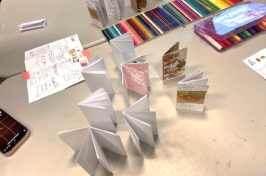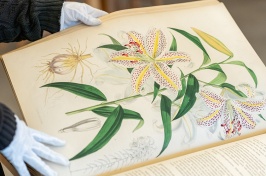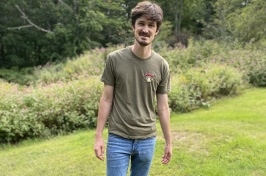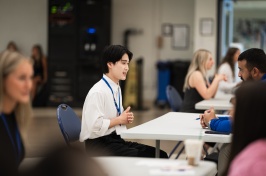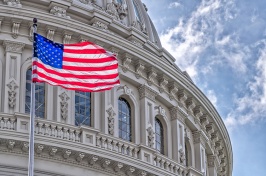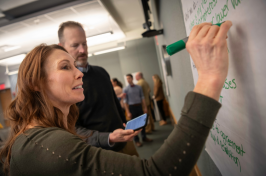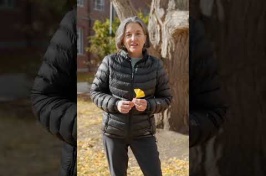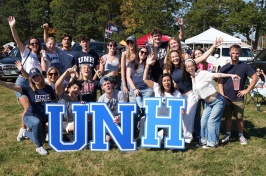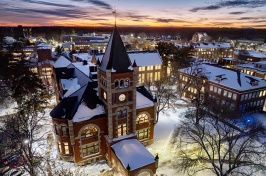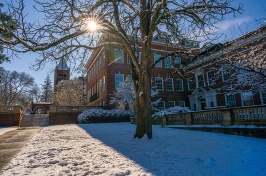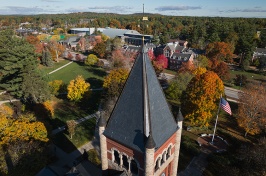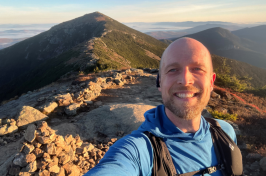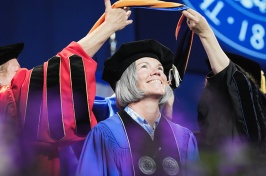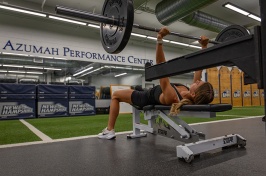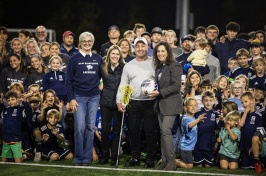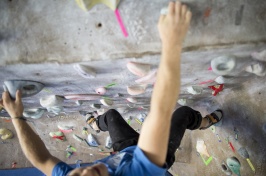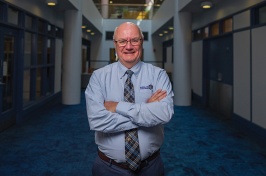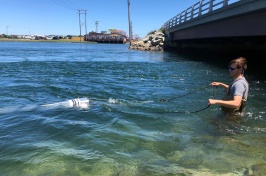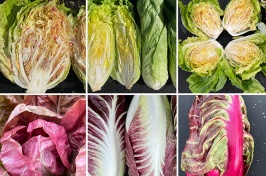NHAg COLSA
Estrogen in Clover?
Researchers at UNH find drought increases phytoestrogen levels in red clover, impacting dairy cows’ health. Kura clover shows promise as a resilient forage alternative. Read More-
06/19/24
Microplastics in Estuaries
Estuaries in New England are crucial for wildlife and aquaculture, but microplastics pose a growing threat. UNH researchers are studying microplastic... -
06/17/24
Aquatic Plants Could Help Reduce Water Pollution
Tiny aquatic plants called duckweed and their microbes could be engineered to cleanse chemicals from runoff water. Anna O'Brien's research at UNH... -
06/07/24
Best Radicchio Varieties for New England Farmers
Granite State farmers can boost sustainability by adding high-demand radicchio to their crops, and research at UNH is aiding that effort by... -
04/04/24
Maine Farmers Receptive to Seaweed Feed
New research involving UNH scientists reveals Maine organic dairy farmers prioritize cost and supply issues but are open to paying more for...
Recent Stories
-
12/03/23 - From New Hampshire to Maryland: A Kiwiberry Road TripUNH's kiwiberry research gets a boost from a new NE SARE grant, advancing regional agriculture with innovative, sustainable farming practices. Read More
-
08/19/23 - NH Agricultural Experiment Station’s New CREATE Grants Promote Multidisciplinary ScienceUnleash innovation through interdisciplinary collaboration. Explore CREATE: An NHAES research program uniting diverse minds to solve NH's challenges. Read More
-
08/09/23 - Examining Perspectives of New England Farmers MarketsResearch led by scientists from UNH's COLSA and Carsey School examines consumer views on farmers markets and other alternative food networks. Read More
-
07/28/23 - UNH Researcher Publishes Paper on Role of River Corridors in Critical Zone (CZ) ScienceNHAES research shows that studying streams and rivers with a multidisciplinary approach aids in understanding Earth’s Critical Zones. Read More
-
07/25/23 - Preventing Mushy Blueberries by Managing Spotted Wing DrosophilaUNH researchers are investigating cultural controls to manage invasive spotted wing drosophila (SWD) in berry patches and fruit orchards. Read More
-
07/21/23 - College Students With Disabilities Are More Food InsecureA UNH study reveals that college students with disabilities face higher food insecurity rates than do students without disabilities. Read More
-
06/13/23 - New Study Examines Bee Communities Across Apple Orchards in Every New Hampshire CountyCOLSA graduate student Shyloh Favreau worked with a team to categorize bee species in Granite State apple orchards in an NHAES-supported study. Read More
-
06/04/23 - A Look at UNH’s Potentially Blight-resistant American Chestnut PlotOne of the largest remaining plots of American chestnut trees in New Hampshire is located at the UNH Kingman Research Farm. The one-acre research plot is a joint effort between... Read More
-
05/18/23 - Should You Be Topping Your Brussels Sprouts?Research led by New Hampshire Agricultural Experiment Station scientist Becky Sideman examined "topping" — or removal of the top stem — of Brussels sprout varieties grown in New... Read More
-
05/11/23 - Helping a Forest to Grow: Spreading Fungal Spores by Wind Vs. Small MammalsAn interdisciplinary team of UNH researchers recently shared their findings into how wind and small mammals—eastern chipmunks, southern red-backed voles and woodland jumping mice—... Read More

